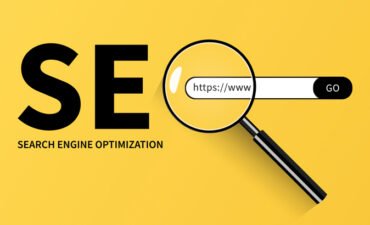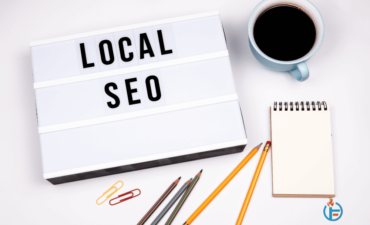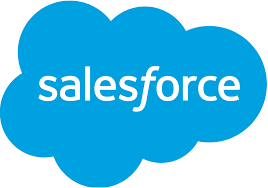In an era where the digital landscape reigns supreme, social media platforms have become a battlefield for brands vying to capture the attention of their target audience. From Facebook and Instagram to Twitter and Snapchat, these platforms offer businesses a unique opportunity to connect with potential customers through targeted advertising. However, as every savvy marketer knows, nothing in this world comes for free – not even virtual real estate. So just how much do social media ads cost? Unraveling this complex question requires delving into a multitude of factors that influence pricing structures and ultimately determine the success or failure of an online advertising campaign.
Understanding the importance of social media ads
Social media has become an integral part of our lives, with billions of users worldwide. This immense user base presents a golden opportunity for businesses to reach and engage with their target audience. However, organic reach on social media platforms is declining rapidly, making it harder for brands to stand out amidst the noise. This is where social media ads play a crucial role.
By investing in social media ads, businesses can enhance their visibility and target specific demographics that align with their products or services. These ads not only ensure that your content reaches a wider audience but also enable you to track and measure engagement metrics, giving you valuable insights into your campaign’s performance. Moreover, unlike traditional advertising methods, social media ads are cost-effective and easily customizable to fit any budget.
Harnessing the power of social media ads allows businesses to stay relevant in the digital era where consumers are constantly bombarded with information. It provides an opportunity for both established brands and small businesses alike to level the playing field by reaching potential customers on equal footing. With careful planning and strategic execution of social media ad campaigns, organizations can significantly boost their brand awareness, capture leads effectively, and ultimately drive conversions that positively impact their bottom line.
Factors that affect the cost of social media ads
Factors that affect the cost of social media ads can vary greatly depending on several factors. Firstly, the platform being used plays a significant role in determining the cost. For example, advertising on popular platforms like Facebook and Instagram typically have higher costs due to their large user bases and extensive targeting options. On the other hand, less popular platforms may offer lower ad costs but with potentially limited reach.
Another key factor influencing ad costs is the level of competition within your target audience. If you are vying for attention in a highly competitive industry or targeting a highly sought-after demographic, you can expect to pay more for each click or impression. Similarly, seasonality and current events can also impact ad costs. During peak times such as holiday seasons or major global events, advertisers tend to increase their budgets which leads to increased ad prices. The quality and relevance of your ads also have a significant effect on their cost. Platforms like Facebook take into account factors such as click-through rates and engagement levels when determining the cost of an ad. Thus, creating compelling and well-targeted ads that resonate with your audience can positively impact your overall campaign performance while minimizing costs.
Platform-specific costs: Facebook, Instagram, Twitter, etc.
Facebook, Instagram, Twitter, and other social media platforms offer unparalleled reach and targeting options for businesses looking to advertise online. However, it’s crucial for marketers to have a clear understanding of the costs associated with each platform before diving into their advertising campaigns.
Facebook ads dominate the digital advertising landscape due to its massive user base and wealth of targeting options. The average cost per click (CPC) on Facebook is around $0.97, while the cost per thousand impressions (CPM) averages at about $7.19. On the other hand, Instagram ads tend to be slightly more expensive than Facebook ads, with an average CPC of $1.41 and a CPM of $7.91. It’s worth noting that while these figures provide a general picture, costs can vary significantly depending on factors such as ad quality score and audience targeting.
Twitter also offers targeted advertising opportunities for businesses aiming to reach their desired audience on the platform. The average CPC on Twitter ranges from $0.38 to $0.91 depending on industry verticals such as technology or retail. Additionally, the average CPM falls between $6 and $9 for most advertisers who opt for Twitter advertising campaigns.
Targeting options and their impact on cost
When it comes to social media advertising, targeting options play a crucial role in determining the cost of your ads. The more specific and granular you get with your target audience, the higher the cost is likely to be. This is because niche targeting requires more effort and resources to reach a limited audience. On the other hand, broader targeting options can lower costs as they allow for a larger pool of potential customers.
However, it’s important to remember that just because an option has a higher cost doesn’t necessarily mean it will yield better results. Sometimes, casting a wider net and reaching a broader audience can lead to increased brand awareness and potential leads that might not have been captured with narrow targeting options. Ultimately, finding the right balance between reaching your ideal customer base while keeping costs manageable is key when considering targeting options. Additionally, another factor that impacts ad costs based on targeting options is competition within your chosen audience segment. If there are many advertisers vying for attention from the same target audience as you, this can drive up ad costs due to increased demand and limited supply of ad space. It’s essential to conduct thorough research into competitor activity within your target market and adjust bidding strategies accordingly to ensure cost-effectiveness while still reaching your desired audience effectively.
Conclusion: Tips for optimizing your ad budget.
In conclusion, optimizing your ad budget is crucial for maximizing the value and impact of your social media ads. Here are a few tips to help you make the most out of your budget. Before diving into any advertising campaign, clearly define what you want to achieve. Whether it’s driving website traffic, generating leads, or increasing brand awareness, knowing your goals will allow you to allocate your budget more effectively.
Don’t be afraid to experiment with different ad formats, targeting options, and messaging styles. Continuously testing and refining your ads will help you identify what works best for your audience and optimize your spending accordingly. Keep a close eye on the analytics of each ad campaign to measure its effectiveness. Identify metrics that align with your goals—for example, click-through rates or cost per conversion—and adjust strategies based on the data insights gained.
By implementing these optimization tips into your social media ad strategy, you can ensure that every dollar spent delivers tangible results while still staying within budget constraints.








